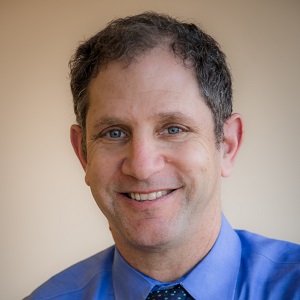
Michael Buller (he/him/his)
Vice President, Branded Content & Creative Services
Dana-Farber Cancer Institute
We caught up with Michael Buller to discover more about him, what he’s up to, and what we can learn from him.
Briefly describe your current role.
I lead a team with a broad set of responsibilities, including content strategy and development, strategic communications development, workforce and patient/family communications, and creative services including design, photography, and video. We create content and communications for different audiences across digital and print channels. I oversee that team and help to set content and communications strategy and get the wheels in motion to execute that strategy. With a large team, one of my most important responsibilities is making sure people have the resources they need to do their job and they are empowered to do so.
Briefly describe your career journey and what led you to institutional advancement in academic medicine.
I spent the first 20 years of my career in magazines, which I fell into by accident, but loved it. I was a writer for a few years and then an editor for most of my publishing career. I had the opportunity about 15 years ago to move to Dana-Farber, where I could do what I loved and do it for a mission-focused organization. That’s what drew me to Dana-Farber—to be able to make even a small impact toward our mission of reducing the burden of cancer is a great motivator. It’s what gets you through the tough days. We’re all doing this for a reason.
What achievement in your current job are you proud of?
Well, this may sound cliché, but really, I’m most proud of my team that we’ve built over the years. It’s an amazing group of people—dedicated, talented, hardworking, and just plain nice. That hasn’t happened by accident. I feel like we’re just hitting our stride. Outside of my team, I’m also proud of our ability to develop a content marketing discipline. When we launched our blog back in 2012, we were fighting headwinds from people who wanted to make it more about Dana-Farber, and we had to fight to keep it focused on providing information about cancer and not about how great we were as an organization.
What is a challenge that you/your unit/your institution are/is facing and how are you addressing it?
I think the biggest challenge we face as a team and department is prioritization. This shows up in many ways: how do you prioritize the requests that come at you from every department and corner of the institute? How do you prioritize all the great story ideas, the great video ideas you want to pursue? I like to say if everything is a priority, nothing is a priority. About a year ago, we adopted a quarterly goal-setting process based on John Doerr’s Measure What Matters book. We’re not fully there yet, but we’re making progress, and it’s one tool, in addition to making sure everyone is aware of our strategic initiatives and priority areas, to help people prioritize.
What was a mistake you made and how did you learn from it?
I took a job once with a guy I had previously worked with. It had been many years; we lived in the same town and used to run into one another around town. And he offered me a position in his new company. We talked about the company and his plans. I thought, I know him, this could be cool. So I took him at his word and said, “Sure.” Well, he had no budget; no plan (other than what was in his head) for the “division” I was supposed to be growing; no agreement from the other managers running his company. So I learned: do your homework and your due diligence. Don’t take assurances but insist on seeing plans and documents, even if you are working with a “friend.”
What is the best career advice you were given and how have you used it?
No one specifically said this to me, but when I was a young staff writer, my two editors (Roger and David) gave me career advice by how they acted. I was writing long feature stories at the time—not New Yorker long, but still upwards of 4,000 words—and they would hack them up and then sit down with me and go through their edits and what they were doing and trying to accomplish. That took time. They could have just thrown it back at me and said, “Fix it.” But they took the time to be kind and to help me become a better writer. I’ve worked with and edited many, many writers over my editing career, and I carried Roger and David’s example with me.
What advice do you have for other institutional advancement professionals in academic medicine?
Get involved with GIA. Yeah, I know, shameless plug. But for me, it’s been a great source of learning and creative inspiration, collegiality and friendship, and, during the pandemic, therapy. I’ve been involved for about 7-8 years and wish I had been involved since I joined Dana-Farber back in 2008.
And stay focused on the mission and the good you’re doing. Working at large academic centers can come with its share of communications compromises, even some frustration and bureaucracy. Remember it’s the mission that matters.
We want to shine the light on you! If you want to connect with others, share stories, and highlight best practices by being featured in the Member Spotlight, please contact gia@aamc.org for submission guidelines.